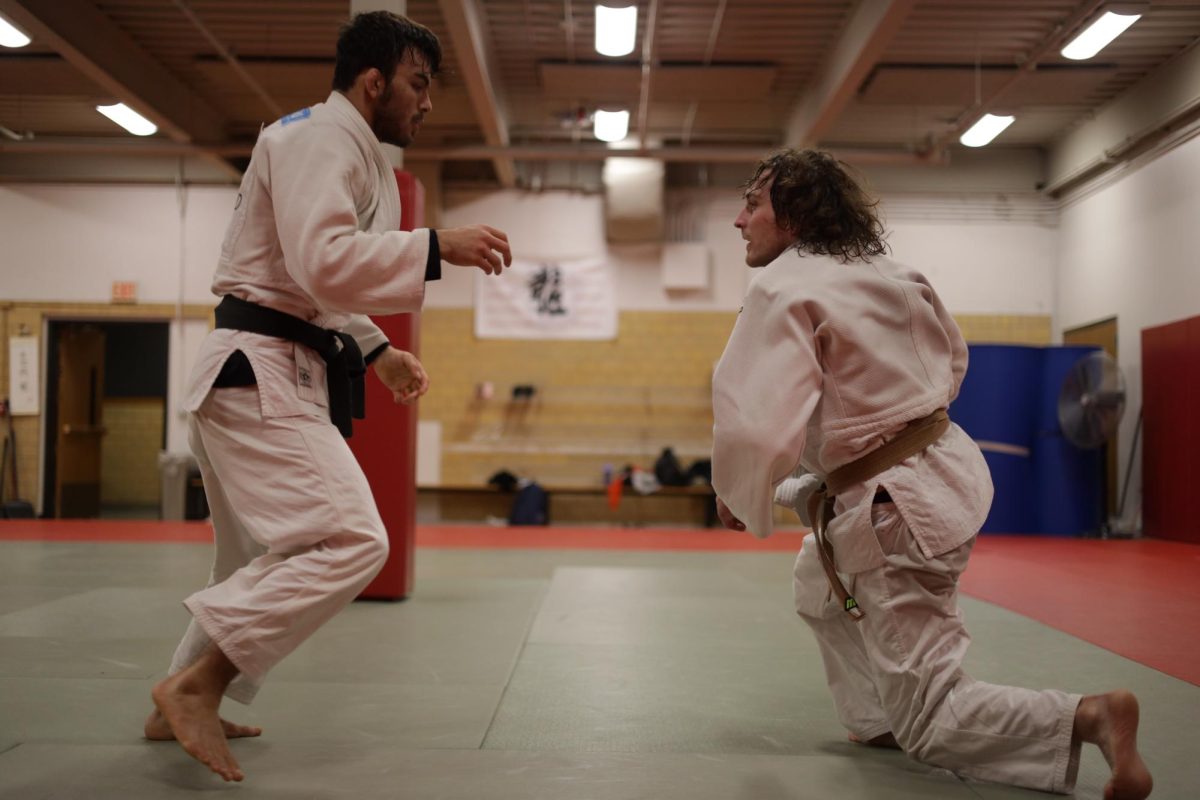‘Barjche’ performances combine to bring life to modern dance
February 16, 2004
Iowa State’s yearly dance production of “Barjche” proved it takes more than two feet to pull off a modern dance production — it also takes time, not to mention the ability, to bend in unnatural ways and memorize long stretches of choreography.
Members of the ISU dance group Orchesis I were the performers of the show, although members of the ISU dance, theater and music departments all blended their talents in choreographing and putting together the final product, which was displayed this weekend at Fisher Theater.
Each dance was strikingly original, both in concept and in use of props and costumes. While some dances focused heavily on strobe lights or theater masks, others were pure movement.
Some of the dances evoked an “I don’t get it” response, but audience members needed only to wait a moment before the entire stage would be transformed into something new — everything from a powwow to a nightmare sequence to a group of children playing games was translated into modern dance.
Worth noting was the lighting, which was choreographed almost as painstakingly as the dances themselves, knocking the performances up a notch in professionalism.
The songs also ran the gauntlet of music, from techno to classical, with a tendency to lean toward the unheard of.
However, the costumes, props and music, whether simple or flashy, always seemed to be designed to put the focus on the simple movements of the dancers’ bodies.
“Barjche,” like modern dance, is not for everyone. Anyone who thinks what Britney Spears does with her hips is artistic expression might not have the patience to sit through two hours of dance deconstructed to its most basic form. However, it does give a wider interpretation of what dance can be.
Because modern dance is so open to interpretation, it can be hard to compare the individual dances. “Mitakuye Oyasin,” which was reminiscent of an American Indian powwow performed by Amy Martin and choreographed by Vernon Windsor, was impressive in that it was one of the longest performances. It was up to Martin to hold the audience’s attention, all by herself, with minimal props.
Similarly, one of the things that made “Barjche” fun to watch was that the dancers looked like they were enjoying themselves. There were no inhibitions about expressing emotions while wearing close-fitting costumes on a stage in front of an audience — it was almost enough to inspire the audience to go home and practice their own moves in front of a mirror.
At its best moments, “Barjche” was not about dance, but about movement — when the focus was on the flexing of a foot or the stretching of an arm. This focus on movement is what set “Barjche” apart from any other dance performance at Iowa State.






